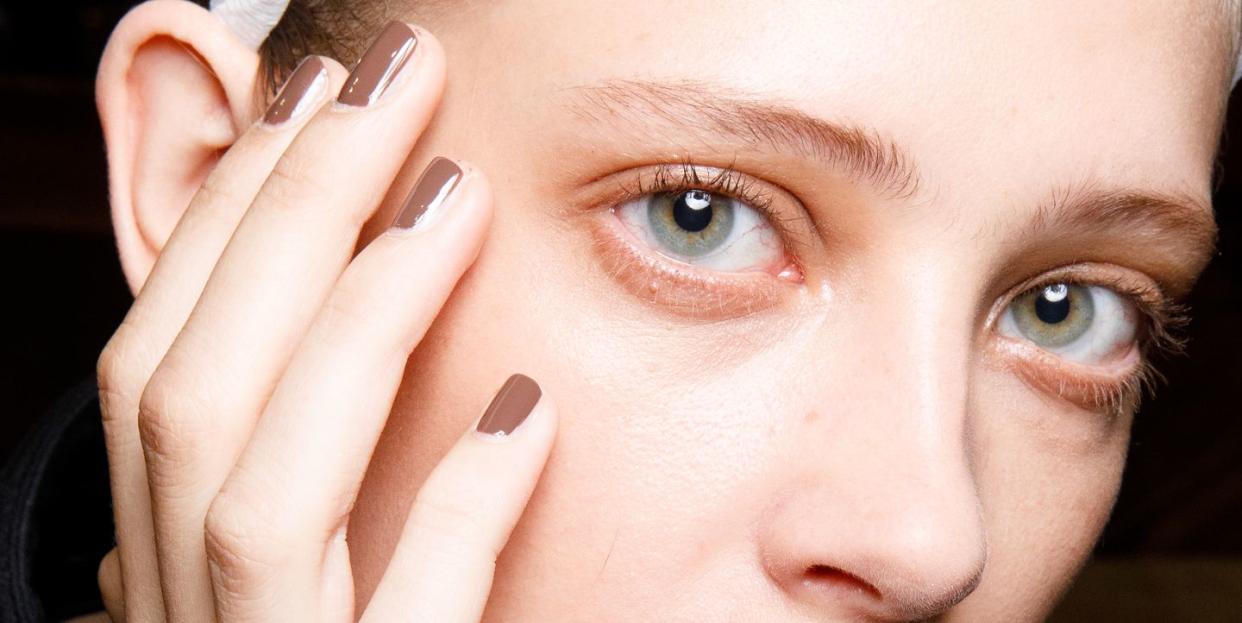Here's How and Why You Should Add Turmeric to Your Skincare Routine

If health is wealth, then turmeric is gold. But really, the flowering plant in the ginger family is gold in color and the turmeric benefits for skin—and health—are plentiful.
Native to South and Southeast Asia, “the root part [of turmeric] is what is used in cooking, traditional South Asian and Asian medicine, and now in skincare,” says Krupa Koestline, clean cosmetic chemist and founder of KKT Consultants.
For thousands of years, turmeric has been used to boost the immune system, improve gastrointestinal issues, relieve arthritis, improve diabetes, and even help with respiratory problems. No wonder it’s such a popular kitchen pantry ingredient.
What gives turmeric its edge is that one of its main constituents is curcumin, aka “the molecule compound that gives turmeric its yellow color and most of its beneficial properties,” says Koestline.
How does turmeric benefit the skin?
Curcumin is filled with antioxidant, anti-inflammatory, and anti-microbial properties, says Marina Peredo, MD, a board-certified dermatologist and founder of Skinfluence, which is based in New York City. “It increases blood flow, gives skin a natural glow, and can help with inflammatory skin conditions like eczema, psoriasis, and acne.”
On more turmeric benefits for skin, Koestline adds, “Because a lot of skin disorders are inflammatory in nature, turmeric can help reduce swelling, puffiness, and redness." Additionally, she notes that curcumin has brightening properties to help diminish dark spots and post-inflammatory hyperpigmentation.
Morgan Rabach, MD, a board-certified dermatologist and co-founder of LM Medical based in New York City, agrees that turmeric can indeed help relieve redness and inflammation as well as brighten and calm the skin, but points out that more science is needed to confirm whether it can help with inflammatory skin conditions and hyperpigmentation.
As with any skin-care ingredient, the benefits can vary based on your skin type and other factors. If you ever experience any irritation, no matter how small, reach out to your dermatologist before trying any other products with the ingredient.
What should I know before using turmeric on my skin?
Turmeric is “suited for all skin types although [act with] caution on sensitive or allergic skin,” says Dr. Rabach. Before adding turmeric to your skincare routine, always do a patch test first. “Use smaller concentrations and also try it on the neck or arm before using it on the face.”
Leave it on for at least four hours, wait one to two days, and stop using it if any redness, swelling, or itchiness occurs, says Koestline. “If you know you are allergic to turmeric and can't eat it, completely skip the patch test and the product.” Additionally, “like any bioactive ingredient, you can potentially use too much of it,” Koestline adds. So stick to using turmeric once a day at most.
What are the downsides of using turmeric on the skin?
In general, the derms agree that turmeric is pretty tolerable. However, there’s a catch. Although at-home face masks that include ingredients like turmeric, Greek yogurt, and honey mixed together (a favorite of Dr. Peredo’s) can be beneficial for skin, “It’s usually the DIY face masks that end up staining the skin,” says Koestline.
Remember that golden color we were just talking about? Well, the pigment can deposit easily and quickly onto the skin — and stay there if not removed swiftly. If you’re going to be using an at-home face mask with turmeric, take note of when you apply it and leave it on your face for 15 minutes max, advises Dr. Peredo.
If you did accidentally stain your skin, rest assured that there’s an easy fix. “Since curcumin is oil-based, you can easily remove the stain with an oil-based cleanser or cleansing balm,” says Koestline.
Also, this isn’t necessarily a downside depending on your scent preferences, but it’s worth noting that the natural ingredient has a strong scent. “Turmeric has scents of orange or ginger and is mildly aromatic,” says Dr. Peredo (again, this mainly applies if you’re doing a homemade turmeric face mask).
There is, however, a way to use turmeric for skin and get around the staining and scent. “Most formulators use purified curcumin that's colorless so it won't stain your skin. Some also use Kasturi turmeric that is colorless,” says Koestline. Dr. Peredo notes that skincare products also do not typically have a strong scent (although some may have a slight hint of it) because turmeric is mixed with other ingredients.
On that note, here are the top turmeric skin-care products on the market, according to the pros.
You Might Also Like

